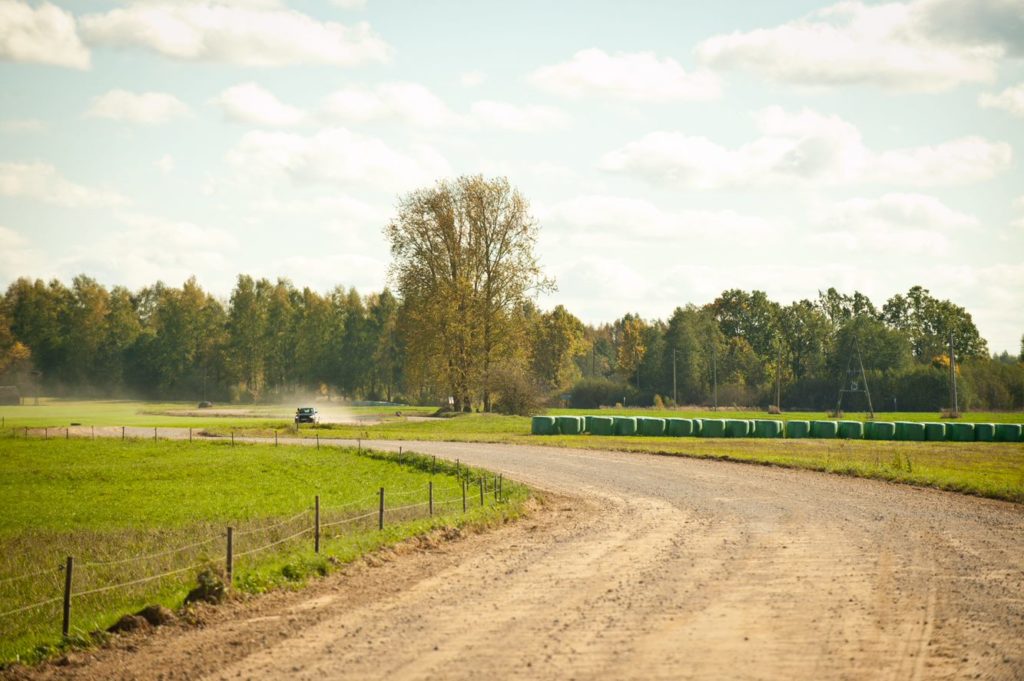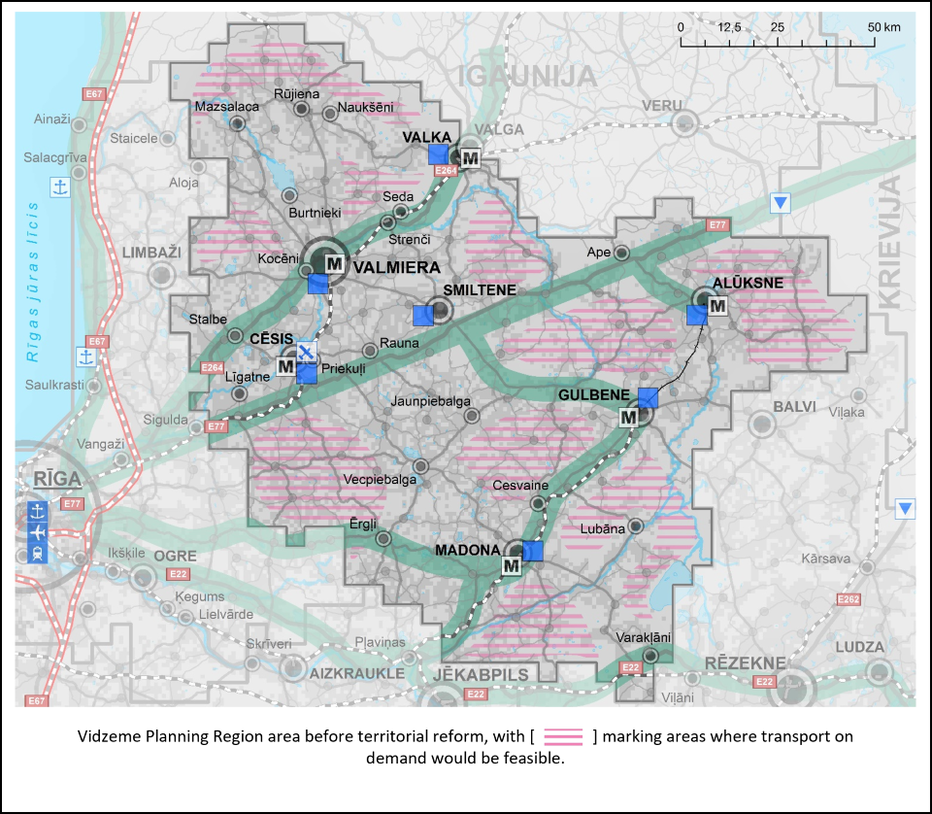Vidzeme offers ideas for new mobility solutions in rural areas
“In order to encourage community representatives, as well as local and national government specialists to test new mobility solutions in remote rural areas, Vidzeme Planning Region has created a video story that offers three examples of alternative modes of transport – citizen bus, transport-on-demand and bicycles, incl. electric bicycles.
The emphasis has been on mobility solutions that citizens can initiate and implement on their own, as well as co-financed or fully funded by the local government, i.e., municipalities, regions, or national authorities. The above-mentioned solutions are also analyzed in detail in a study ordered by Vidzeme Planning Region on the introduction of new transport services in the region.”
Alternative mobility services in remote regions of Latvia.
To meet their daily mobility needs, most people in Latvia use one of the four dominant modes of transport: walking, cycling, public transport or private car. Considering other modes of mobility that are available in Latvia but have not yet gained a dominant position, such as shared vehicle system, various electric micro-mobility solutions, water transport, small aviation, it can be assumed that the range of choices of mobility services is wide enough, and the needs of the population should be met. In and around larger cities, mobility needs, and supply are much more balanced than in other regions of country, especially in rural areas with relatively small population and low population density.
In addition to the spatial distribution of the population, the socio-economic situation of an area is an important aspect of the mobility solutions. Many groups in society are practically unable to use many mobility solutions because of their age, health, or income level. In addition, most of the commercial mobility services available in urban areas (e.g., taxis, shared vehicle hire) are not offered in rural areas at all. When analysing the spatial and socio-economic aspects of mobility, it becomes clear where and which are the target groups that should be given extra attention and care in finding the most appropriate mobility solutions to improve their quality of life.
It is with such groups in mind that Vidzeme Planning Region (VPR) experts joined the international MARA project, which addresses similar challenges in other parts of Europe. Within the project, the team chose to focus on improving public transport services in Vidzeme and exploring the potential of electric bicycles.
Latvia’s public transport system with a network of regular bus service functions well on regional routes, where there are larger passenger flows, but undeservedly leaves out rural residents in less densely populated areas, where local regular bus routes often have low passenger numbers (1-3 passengers per km). Given the low number of passengers on such routes, it is assumed that there is no demand for public transport services in these areas, and therefore the number of services is significantly reduced (down to 1-2 services per week) or the route is closed altogether, depriving the population in availability of public transport services.
The research carried out within the project confirmed the assumption that there are already enough rural areas in Latvia where changes in the demographic structure and low population density no longer constitute the necessary critical mass to make it feasible to continue traditional public transport services on certain routes and in fixed time. For several years the VPR and project partners elsewhere in the EU have been raising the issue of the unavailability of public transport services in sparsely populated rural areas and the resulting social isolation of the population. An appropriate solution to this situation is on-demand public passenger transport, which would be regularly available to the population on certain days, in certain areas and would take inhabitants to the destinations of their choice.
In addition to public transport services and social services organised by the state or local authorities, communities, and local municipalities in many parts of Europe organise a „citizen bus”. This service is generally understood as a locally initiated transport service, tailored as much as possible to the specific needs of the local population, which cannot be met by the existing public transport offer. Typically, this service is provided by a purchased low-capacity minibus or car, chauffeured by volunteers from the local community or by specially hired drivers. The frequency and destinations of the routes are adapted to the changing needs of the local population. The application process can be done either by phone or through various digital solutions. In many parts of Europe, such solutions have already been implemented and are working successfully with the financial support of the state, local authorities, and local citizens. In Latvia, the VPR successfully piloted this solution within the framework of the Interreg Baltic Sea Region Program 2014-2020 project MAMBA. 2777 passengers that were carried in 11 months show that the need for mobility in remote rural areas is enormous. This is also confirmed by the video story about the daily mobility of four Vidzeme residents. It can be watched here: https://www.youtube.com/watch?v=IeX30i_MYTQ .
An electric bicycle can be a good alternative to a car if one need to travel short distances to get to work or school, or for leisure or work activities. In August 2020, as part of the project, VPR provided trial e-bike rides to residents and visitors in the towns of Cēsis and Valmiera on a route of their choice (average route length 15 km).
A total of 363 people, most of them residents, took advantage of this opportunity over a two-week period. In Latvia, including the VPR, the use of e-bikes is not yet widespread. If the trend changes, their use could significantly increase the role of cycling in sustainable mobility in both urban and rural areas. Such bicycles can become an important element of local bike-sharing systems. As a mode of transport, it can be easily combined with rail and bus. The experience of the project partners shows that e-bike accessibility can be ensured both by introducing a shared system (e.g., in Tartu) and by setting up individual rental points.
New mobility services can improve the quality of life for people in rural areas. Accessible local mobility services increase people’s sense of security that they will be able to meet their basic needs even if they do not have access to a private car or regular public bus services. Local mobility options and access to basic services are also important prerequisites for preventing rural areas from becoming emptier and reducing the risks of social exclusion.
With that in mind VPR used an opportunity provided by MARA project to develop a Mobility Plan for Smiltene Municipality. The document is currently the first mobility planning document in Latvia that covers the entire territory of the municipality. The aim of the Mobility Plan was to prepare a strategic planning document for enlarged Smiltene municipality which is now formed of three smaller municipalities. The document will be used as a guideline for the development of mobility services and related infrastructure to meet the mobility needs of citizens and businesses in both the city of Smiltene and the rural areas of the municipality, thereby improving the quality of life of the population.
Sarmīte Daudziete, who is a territory planner in Smiltene municipality admits:
„The developed mobility plan is a qualitative study of the current situation, which also outlines the mobility opportunities of the residents of Smiltene Municipality. Involving local people was very important, as it allowed for a better understanding of their needs and raised awareness of the goals and objectives set out in the planning document. The plan will be used by the municipality in its daily work, planning the development and improvement of transport infrastructure.”

Municipalities and communities can already play an active role in developing new solutions to improve mobility in their neighbourhoods. The role of the VPR is to continue the work started in the field of improving mobility in the region and to initiate the necessary changes in the legal framework, introducing modes of transport that meet the needs and socio-economic conditions of the population. For VPR it is crucial to continue working with regional and cross border partners through collaborative projects on EU level to ensure that we can share our research methods, findings, results, and best practices with broad range of experts and enthusiasts, at the same time having continuous opportunity to learn from regions in similar geographical and socioeconomic situation who have tested and successfully implemented innovative mobility solutions in rural areas.












